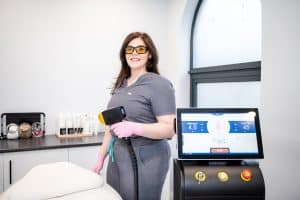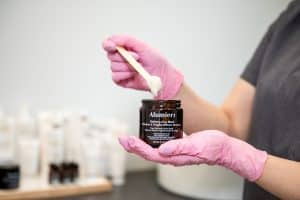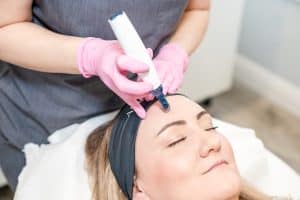
Is Laser Hair Removal Worth the Investment?
Is Laser Hair Removal Worth the Investment? Delving into the Value of Laser Hair Removal: Assessing Treatment Worth Laser hair removal has become a popular
blog post
Alkaline hair removal, also known as alkaline wash or alkaline hair depilation, has emerged as a popular alternative to traditional hair removal methods like shaving, waxing, or laser treatment. This chemical depilatory technique promises effective hair reduction with minimal discomfort. However, as with any cosmetic procedure, safety is a primary concern. In this blog, we’ll delve into the safety aspects of alkaline hair removal to help you make an informed decision about this skincare treatment.
Alkaline hair removal involves the use of a specially formulated alkaline solution to weaken and dissolve unwanted hair at the follicle level. Unlike shaving, which only trims hair at the surface, or waxing, which pulls hair out from the root, alkaline hair removal penetrates the hair follicles, providing longer-lasting results.
The alkaline solution works by breaking down the protein structure of the hair, causing it to weaken and disintegrate. Once the hair has been treated, it can be easily wiped away, leaving the skin smooth and hair-free. This method is particularly effective for fine facial hair, commonly known as “peach fuzz,” but can also be used on other areas of the body.
Safety is a paramount concern when considering any skincare treatment, including alkaline hair removal. Here are some key factors to consider regarding the safety of this procedure:
In conclusion, alkaline hair removal can be a safe and effective option for individuals seeking long-lasting hair reduction. However, like any cosmetic procedure, it is essential to consider the safety aspects and potential risks associated with the treatment. By choosing a qualified practitioner, undergoing a patch test, and following proper pre-treatment and post-treatment care, you can minimise the risk of adverse reactions and achieve smooth, hair-free skin safely. If you have any concerns or questions about the safety of alkaline hair removal, it is advisable to consult with a skincare professional before undergoing the treatment.
Book your consultation & patch test today.

Is Laser Hair Removal Worth the Investment? Delving into the Value of Laser Hair Removal: Assessing Treatment Worth Laser hair removal has become a popular

Is A Chemical Peel Worth It? Unlocking the Benefits of Chemical Peels: Evaluating Treatment Worth Chemical peels have long been a staple in skincare regimens,

What is the Success Rate of Microneedling? Exploring Microneedling Success: Understanding Treatment Efficacy Microneedling has garnered attention as a promising skincare treatment, praised for its

Is Microneedling Actually Good For Your Skin? Unveiling the Benefits of Microneedling: A Closer Look at Skincare Advantages Microneedling has emerged as a popular skincare